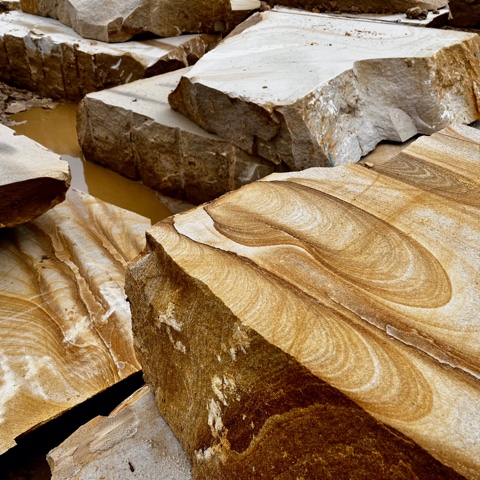
When designers and specifiers recognize the significance of indigenous stone, they should consider several key aspects to effectively incorporate it into their projects. First and foremost, it’s essential to acknowledge the diversity present in our historic built environment. Indigenous stone types offer a rich range of colours and textures that deserve appreciation and celebration. While it’s common to admire buildings that have gracefully weathered into their surroundings, a closer inspection reveals a wide array of tonal variations and markings that enrich the aesthetic experience. This observation challenges the contemporary notion that range must be severely limited; such restrictions not only misrepresent the beauty of our architectural heritage but also eliminate many indigenous stones from consideration. Consequently, this drives up the costs of more uniform options, often at the expense of both creativity and sustainability.

Historically, the most pristine stones were typically reserved for prominent features, such as the front façades, entrances, and fireplaces of buildings. This practice illustrates that the most visible areas often showcase the narrowest range of materials, while other elevations are open to a broader selection of stones. By embracing a more inclusive approach to material selection, designers can create cohesive and harmonious structures that celebrate the variety found in indigenous stones. This inclusivity not only allows for more cost-effective choices but also enhances the visual richness of a project.
Another important consideration is the geological and sizing limitations associated with different stone types. Analysing built heritage can provide valuable insights into the most economical sizes achievable from specific sources. It’s crucial to understand that certain stones cannot yield large, thin panels, and attempting to impose such specifications can complicate the production process. The desired unit sizes significantly influence both material choices and overall costs. As highlighted in the 2016 “State of the Industry” report by Gillespie & Tracey, there is an increasing demand for stone that maintains a uniform character and is available in regular block dimensions. However, it’s vital to remember that stone is a natural material, inherently variable, and this variability is part of what makes it so appealing in traditional architecture.

Engaging early with stone suppliers is a crucial step in the design process. Establishing a clear dialogue about the project’s requirements and the suitability of various stones can lead to practical adjustments that benefit both budget and timeline. Suppliers are often eager to collaborate, as this early engagement allows them to provide valuable insights and prevent potential pitfalls later in the project. By discussing specifics upfront, designers can gain clarity on lead times, ensuring that there are no costly delays during construction.
From my experience with UK suppliers, there is a shared commitment to quality and excellence in the materials provided. Many of these suppliers operate within the communities they serve, and their reputation is tied to the success of each project. They genuinely aspire to deliver outstanding results, knowing that satisfied clients lead to repeat business. This mutual interest in achieving high-quality outcomes aligns the goals of designers and suppliers, fostering a partnership that enhances the overall project.

In summary, designers and specifiers should embrace the diversity of natural stone, whether indigenous or otherwise, by understanding its historical context, geological characteristics, and economic implications. Early engagement with suppliers can facilitate better and more sustainable project outcomes and create a collaborative atmosphere that benefits everyone involved. By valuing the unique qualities of natural stone, designers can contribute to a built environment that reflects both local heritage and contemporary innovation whilst reducing both material and carbon cost.
Written by Marcus Paine of Hutton Stone Co.

